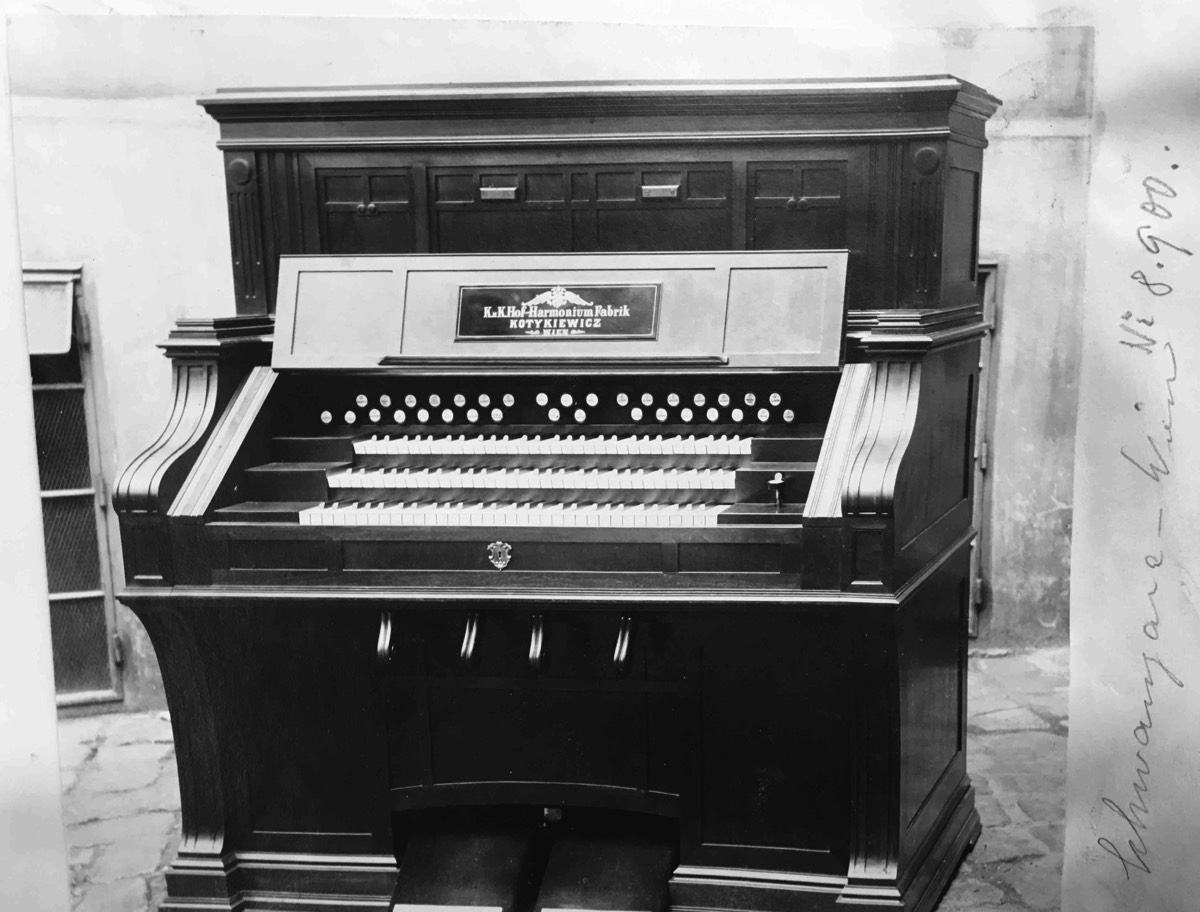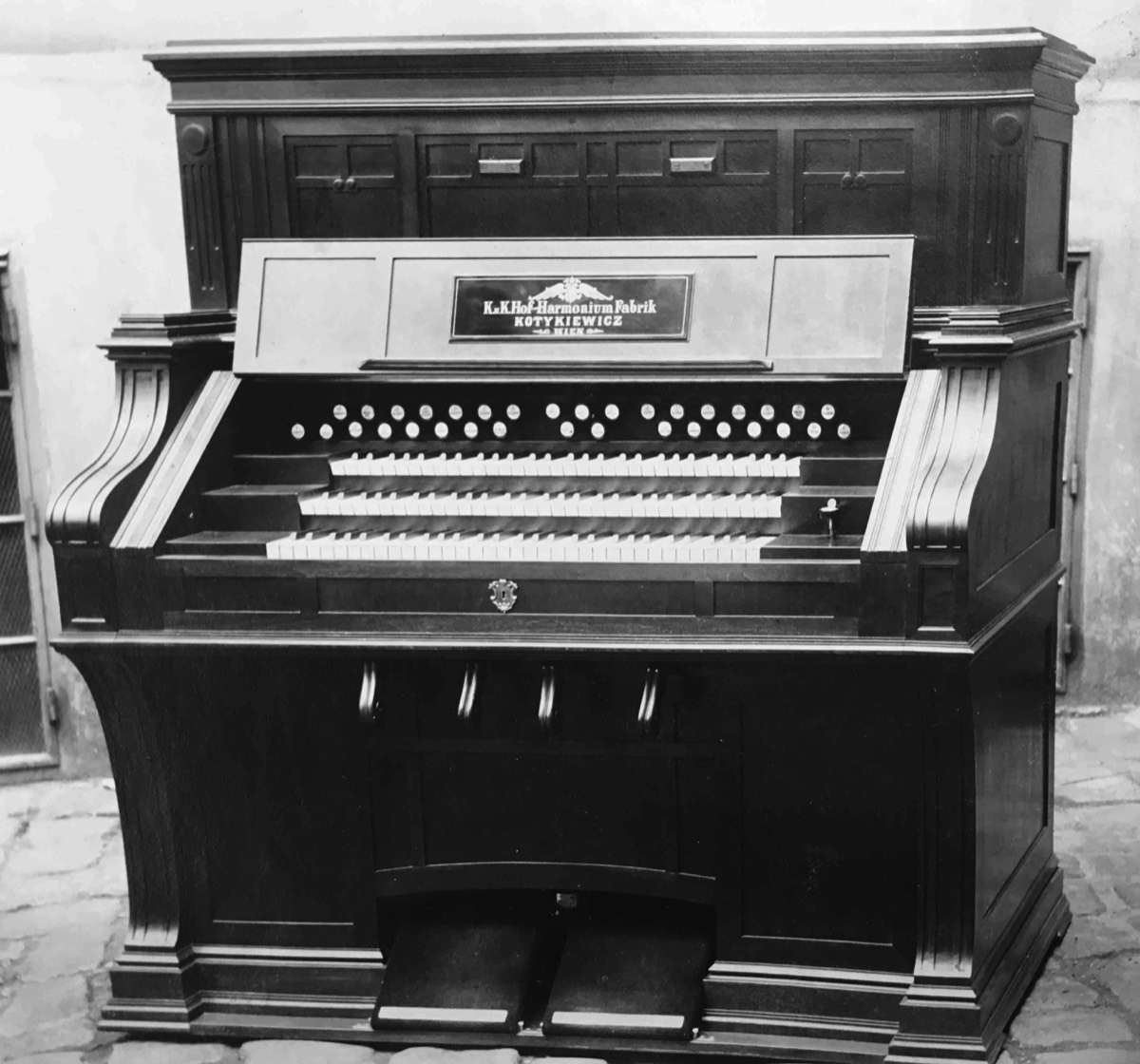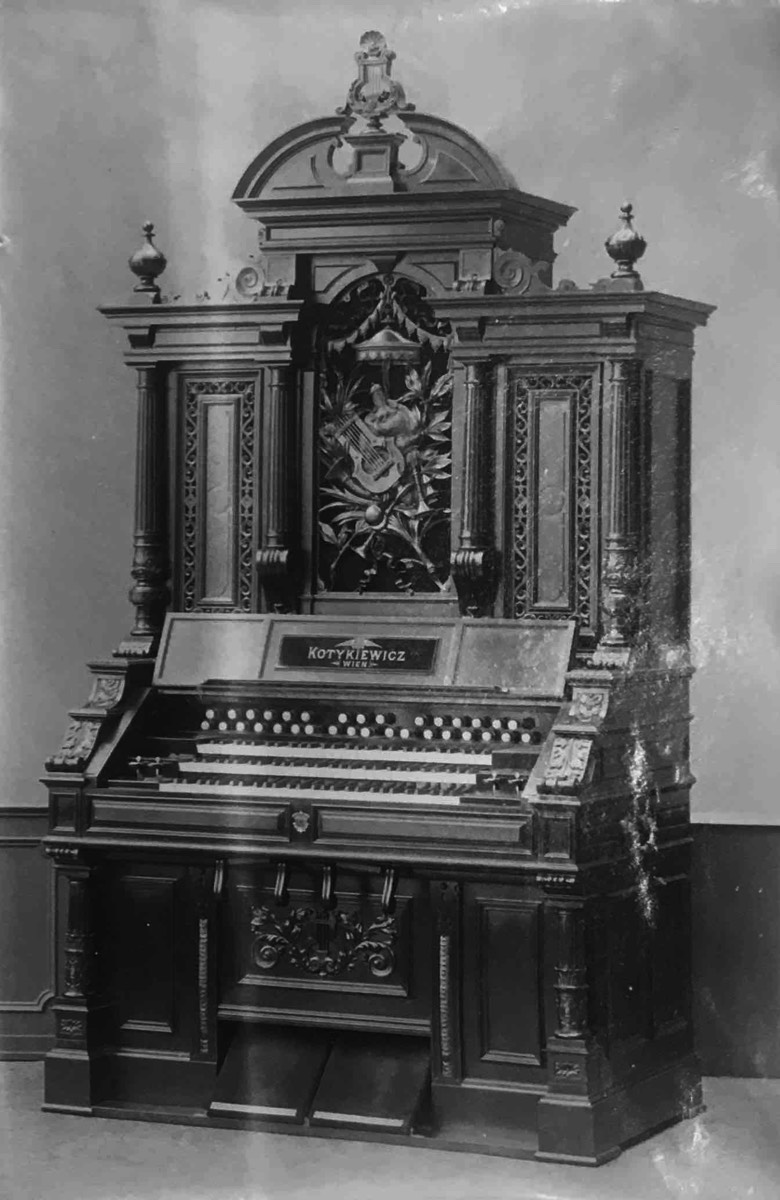Bildnachweis / picture credits:
Technisches Museum Wien / Firmenbestand T. Kotykiewicz (Signatur FI-06) Alle Fotos unterliegen dem Copyright und dürfen nicht ohne Genehmigung verwendet werden! / All photos are subject to copyright and may not be used without permission!







Leider habe ich bisher noch kein dreimanualiges, erhaltenes Harmonium von Kotykiewicz entdeckt. Ich meine ein reines Harmonium, nicht die dreimanualigen Instrumente mit Pedal und Pfeifenregistern, die sogenannten "Hybridinstrumente". Die Fotos zeigen die drei einzigen im Archiv und mir bekannten dreimanualigen Instrumente. Das erste hat die Nummer 8900. Es wurde im Jahre 1909 gebaut und am 6. April 1909 an Herrn Arthur Schwanzara in Wien ausgeliefert. Vermerkt ist ferner: 15 Stimmen, 13 ganze, 2 halbe, 3 Manuale, Percussion, Prologement Automat, Nuss matt. Das bedeutet, es handelt sich nicht im ein Kombinationsinstrument mit Klavier oder Celeste, wie es Kotykiewicz in seinem Katalog aus dem Jahre 1912 erwähnt und anbietet. Es ist leider nicht möglich durch Vergrößerung die Registerschilder lesbar zu machen. Da Kotykiewicz auch Orgelbauer war, sind zwei Theorien denkbar:
1.) Das dritte Manual diente als Fernwerk. Die Register dort waren sehr leise intoniert, so dass man Echoeffekte erzielen konnte, wie bei einer Orgel mit einem Fernwerk. Ein Fernwerk bei einer Orgel ist ein am anderen Ende der Kirche instaliertes Werk, welches vom Haupspieltisch zu spielen ist.
2.) Das dritte Manual diente als Solomanual, welches mit besonders schönen Solostimmen ausgestattet war.
Die anderen beiden Instrumente konnte ich bisher noch nicht zuordnen.
Unfortunately, I have not yet discovered a three-manual, preserved harmonium by Kotykiewicz. I mean a pure harmonium, not the three-manual instruments with pedal and pipe stops, the so-called "hybrid instruments". The photos show the only three-manual instrument known to me and in the archives with the number 8900, built in 1909 and delivered to a Mr. Arthur Schwanzara in Vienna on April 6, 1909. Also noted: 15 voices, 13 whole, 2 half, 3 manuals, percussion, prologuement automaton, walnut matt. This means that it is not a combination instrument with piano or celeste, as Kotykiewicz mentions and offers in his 1912 catalogue. Unfortunately, it is not possible to make the register plates legible by enlarging the photo. Kotykiewicz was also an organ builder, so two theories are conceivable:
1.) The third manual served as a "Fernwerk". The stops there were intoned very quietly, so that echo effects could be achieved, like on an organ. In this case pipe stops are installed in a housing at the other end of the church., which can be played from the main console.
2.) The third manual was as a solo manual, which was equipped with particularly beautiful solo parts.
The other two instruments I could not assign yet

